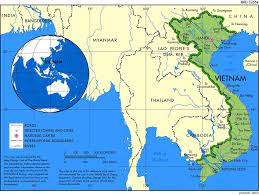Residential areas and urban development play a vital role in shaping the quality of life for people in Vietnam. As the country continues to undergo rapid urbanization, it becomes increasingly important to prioritize sustainable and well-planned urban environments. In this article, we will explore the significance of residential areas and urban development in creating livable and thriving cities in Vietnam.

- Residential Neighborhoods:
Residential neighborhoods form the backbone of urban communities, providing housing options for people of various socioeconomic backgrounds. Well-designed neighborhoods incorporate elements that promote community cohesion, such as parks, recreational areas, and shared spaces. They prioritize safety, accessibility, and a sense of belonging. In Vietnam, residential areas often consist of a mix of housing types, from apartment complexes and townhouses to single-family homes, catering to different lifestyles and preferences. - Urban Planning and Design:
Effective urban planning and design are crucial for creating sustainable and livable cities. It involves thoughtful consideration of factors such as transportation networks, green spaces, infrastructure, and public amenities. Compact and mixed-use development patterns can help reduce commuting distances, enhance walkability, and foster a sense of urban vibrancy. By integrating green spaces, bike lanes, and pedestrian-friendly features, cities can promote healthier and more sustainable lifestyles for their residents. - Smart Cities and Digitalization:
The emergence of smart cities and digitalization has the potential to transform urban living in Vietnam. By utilizing technology and data-driven solutions, cities can enhance efficiency, resource management, and the overall quality of life. Smart city initiatives may include intelligent transportation systems, energy-efficient buildings, and digital services that improve the delivery of public services and facilitate citizen engagement. These advancements can help create more sustainable and connected communities. - Mixed-Use Developments:
Mixed-use developments combine residential, commercial, and recreational spaces within the same area, fostering vibrant and self-contained neighborhoods. They provide residents with convenient access to amenities, such as shopping centers, restaurants, and recreational facilities. Mixed-use developments also reduce the need for long commutes, promote social interaction, and contribute to a sense of community. - Sustainable Urban Development:
Sustainable urban development focuses on minimizing environmental impact and ensuring the long-term viability of cities. This approach involves incorporating green infrastructure, energy-efficient buildings, waste management systems, and renewable energy sources. It also emphasizes the preservation of natural resources, such as water conservation and the protection of biodiversity. Sustainable urban development aims to create cities that are resilient, environmentally friendly, and enjoyable places to live.
In Vietnam, the transformation of residential areas and urban spaces presents both challenges and opportunities. By embracing innovative approaches to urban planning, design, and sustainable development, cities can become more livable, inclusive, and environmentally conscious. Creating well-designed residential areas, integrating smart technologies, and prioritizing sustainable practices can contribute to the overall well-being and happiness of urban residents.
Join us in exploring the dynamic world of residential areas and urban development in Vietnam, where innovative ideas, sustainable practices, and community-driven initiatives shape the cities of the future. Discover the transformative power of urban planning and design, and the importance of creating livable, connected, and sustainable urban environments that enhance the quality of life for all.









